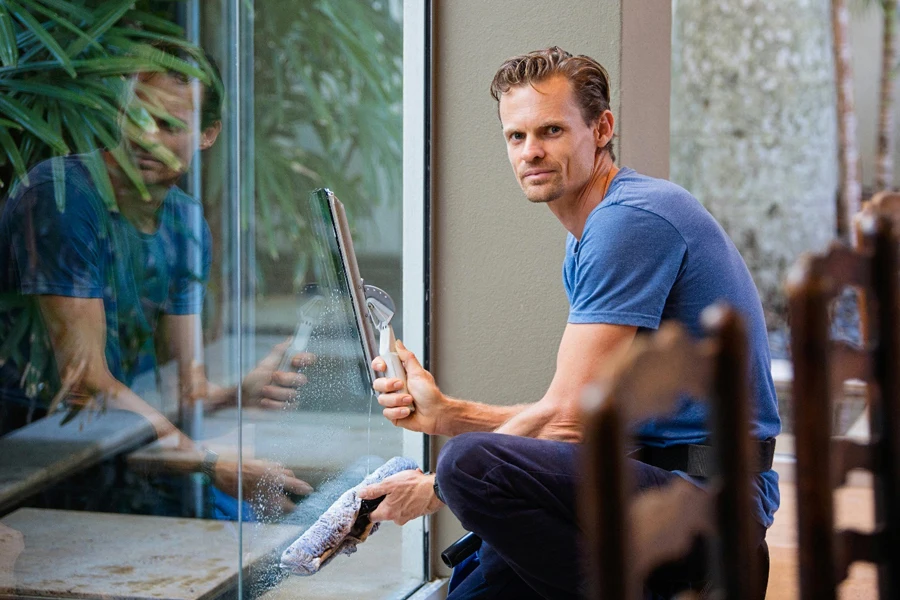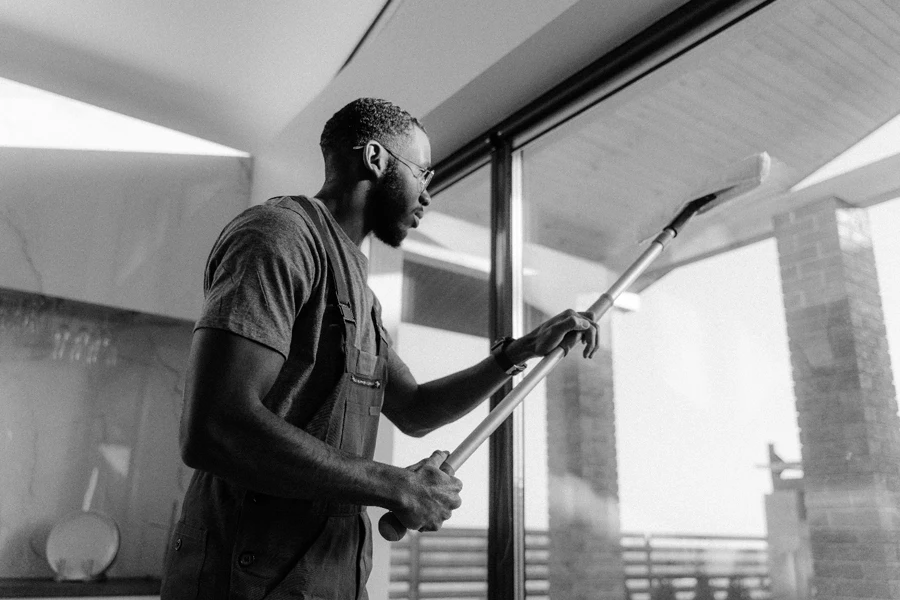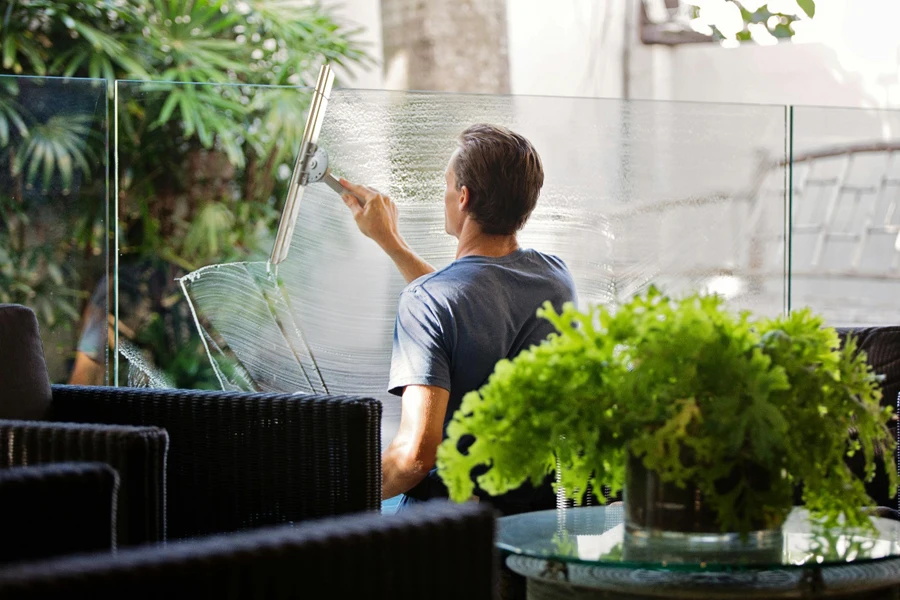Squeegees have become indispensable tools in both industrial and household cleaning, known for their efficiency in removing water, debris, and cleaning solutions from various surfaces. Their versatility spans multiple industries, from window cleaning to large-scale floor maintenance, making them critical for maintaining high cleanliness standards. Understanding the latest market trends and innovations in squeegee design is essential for professional buyers seeking the best tools for specific applications. This article explores the growing squeegee market, different product types, and key factors to consider when selecting the right model for professional use. With the right choice, businesses can improve operational efficiency and extend the lifespan of their cleaning tools.
Table of Contents
● Market overview: Squeegees shaping industries worldwide
● The diverse types of squeegees and their standout features
● Key factors to consider when choosing the best squeegee
● Conclusion
Market overview: Squeegees shaping industries worldwide

The global handheld window squeegee market was valued at $2.55 billion in 2023 and is projected to grow to $3.2 billion by 2032, registering a compound annual growth rate (CAGR) of 2.57% over the forecast period, according to WiseGuyReports. This growth is driven by increasing demand for efficient window cleaning solutions in both residential and commercial sectors. The rising emphasis on hygiene and the trend towards energy-efficient buildings have also fueled demand, especially in regions like North America and Europe, where large windows and high-rise buildings are prevalent.
Regional markets show varying growth patterns, with North America expected to maintain a significant market share due to advanced cleaning standards and high consumer demand. Asia-Pacific is projected to witness substantial growth, driven by rapid urbanization, increasing disposable income, and the expanding construction industry. Europe, meanwhile, remains a key player, supported by stringent energy efficiency regulations and the demand for sustainable cleaning products.
The diverse types of squeegees and their standout features

Rubber squeegee blades
Rubber squeegee blades are known for their flexibility, making them suitable for cleaning smooth surfaces like glass windows and tiles. These blades have a shore hardness rating typically between 60A to 70A, which allows them to conform to surfaces effectively, ensuring water and dirt are wiped away without leaving streaks. Due to their elasticity, rubber blades are often used in household and light commercial cleaning tasks. However, their softness also means they wear out faster, especially when exposed to abrasive surfaces or chemicals. Rubber blades are highly effective in environments where the need for gentle contact with surfaces is a priority, such as glass cleaning and delicate flooring.
Neoprene squeegee blades
Neoprene squeegee blades are more durable than rubber blades and exhibit better resistance to chemicals, oils, and solvents. With a shore hardness typically ranging from 70A to 80A, these blades are more rigid, making them ideal for tougher surfaces like concrete or textured flooring. Neoprene’s chemical resistance allows it to perform well in environments where exposure to cleaning agents and harsh chemicals is common, such as industrial kitchens or manufacturing plants. Neoprene blades are widely used in floor cleaning machines, especially in settings that require frequent cleaning of high-traffic areas. They also maintain flexibility in colder temperatures, making them suitable for outdoor applications.
Polyurethane squeegee blades
Polyurethane squeegee blades are highly regarded for their exceptional durability and abrasion resistance. With shore hardness values often exceeding 80A, they are much more rigid compared to rubber and neoprene, making them suitable for the most demanding cleaning environments. Polyurethane blades perform well on uneven or abrasive surfaces, such as in warehouses, automotive repair shops, or industrial plants. These blades are highly resistant to oils, chemicals, and solvents, ensuring they maintain their integrity over prolonged use, even in harsh conditions. Polyurethane blades are often used in floor scrubbing machines for industrial applications, where long-term durability and resistance to wear are critical.
Squeegee blade profiles

Squeegee blades come in various profiles to suit different cleaning tasks and surfaces. Square-edge blades provide uniform pressure and are best suited for smooth, flat surfaces like windows and polished floors. These blades ensure complete contact with the surface, resulting in effective water and dirt removal. Square-edge blades with rounded corners are designed for applications requiring more flexibility, such as cleaning surfaces with curves or uneven edges. Beveled-edge blades, available in both single and double-sided variations, offer more aggressive cleaning action, making them suitable for heavy-duty applications like floor scrubbing in industrial settings. Double-sided beveled edges allow the blade to be flipped, extending its lifespan.
Specialty squeegees for industrial use
Industrial applications require squeegees that can handle tough environments. Window cleaning squeegees, for example, often feature ergonomic handles and lightweight designs to reduce user fatigue in large-scale commercial window cleaning. Pivoting heads and telescopic handles are common in these squeegees, allowing access to high or hard-to-reach areas. Floor scrubbing squeegees typically use polyurethane blades due to their ability to withstand heavy use and exposure to harsh chemicals. These squeegees are designed for maximum liquid pickup, ensuring that surfaces are left dry and free from residue, which is critical in environments like automotive workshops and food processing plants.
Key factors to consider when choosing the best squeegee

Floor type and surface
Selecting the right squeegee depends heavily on the type of surface being cleaned. For smooth surfaces like glass and tiles, a rubber squeegee blade is ideal due to its flexibility and ability to make close contact with the surface, ensuring streak-free cleaning. For rough or uneven surfaces, such as concrete floors or those with grout lines, a more rigid blade material, like neoprene or polyurethane, is preferred. Neoprene’s ability to handle textured surfaces without wearing down quickly makes it suitable for environments like warehouses or industrial floors, while polyurethane blades are ideal for more abrasive surfaces or where high chemical resistance is needed. Choosing the right blade material based on floor type ensures optimal cleaning efficiency and blade longevity.
Durability and maintenance
The frequency of squeegee use and the environment in which it operates directly impact its durability and maintenance needs. For high-use commercial environments, such as factories or large-scale cleaning operations, blade replacement should be a primary consideration. Rubber blades, while effective for smooth surfaces, tend to wear out faster and require more frequent replacement compared to neoprene or polyurethane blades, which offer better durability. Regular maintenance, including cleaning the blade after use and inspecting for signs of wear, can extend the blade’s lifespan. For commercial applications, squeegee systems that allow for easy blade replacement without needing to change the entire unit offer significant cost savings over time.
Cost-effectiveness vs. performance
When selecting a squeegee, there is often a trade-off between cost and performance. Budget-friendly squeegees, typically made with rubber blades, are sufficient for household or light commercial use where cleaning demands are moderate. However, for larger-scale operations, such as in commercial kitchens or industrial workshops, investing in premium models with polyurethane or neoprene blades can deliver better long-term performance and durability. While the upfront cost of premium squeegees is higher, they tend to last longer and perform better in demanding environments, making them more cost-effective in the long run. Weighing the cost against expected performance and replacement frequency is essential for maximizing operational efficiency.
Environmental and chemical resistance
In environments where squeegees are exposed to chemicals, such as in machine shops or food processing facilities, the material composition of the squeegee blade becomes critical. Polyurethane is highly resistant to oils, solvents, and chemicals, making it the best choice for these settings. Unlike rubber, which degrades quickly when exposed to harsh chemicals, polyurethane retains its shape and performance, ensuring longer-lasting use. Additionally, in environments where sustainability is a priority, selecting squeegees made from eco-friendly materials can contribute to reducing environmental impact without sacrificing performance. Therefore, understanding the environmental conditions in which the squeegee will be used is crucial for selecting the most appropriate and durable product.
Conclusion

Squeegees remain essential tools across both industrial and household cleaning applications due to their versatility and effectiveness in handling various surfaces. From rubber blades for delicate glass cleaning to more durable neoprene and polyurethane options for industrial use, selecting the right squeegee is crucial for maximizing cleaning efficiency and longevity. By considering factors such as floor type, durability, cost, and environmental resistance, businesses can ensure they choose the most suitable tools for their cleaning operations, ultimately improving performance and reducing maintenance costs over time.





 বাংলা
বাংলা Nederlands
Nederlands English
English Français
Français Deutsch
Deutsch हिन्दी
हिन्दी Bahasa Indonesia
Bahasa Indonesia Italiano
Italiano 日本語
日本語 한국어
한국어 Bahasa Melayu
Bahasa Melayu മലയാളം
മലയാളം پښتو
پښتو فارسی
فارسی Polski
Polski Português
Português Русский
Русский Español
Español Kiswahili
Kiswahili ไทย
ไทย Türkçe
Türkçe اردو
اردو Tiếng Việt
Tiếng Việt isiXhosa
isiXhosa Zulu
Zulu